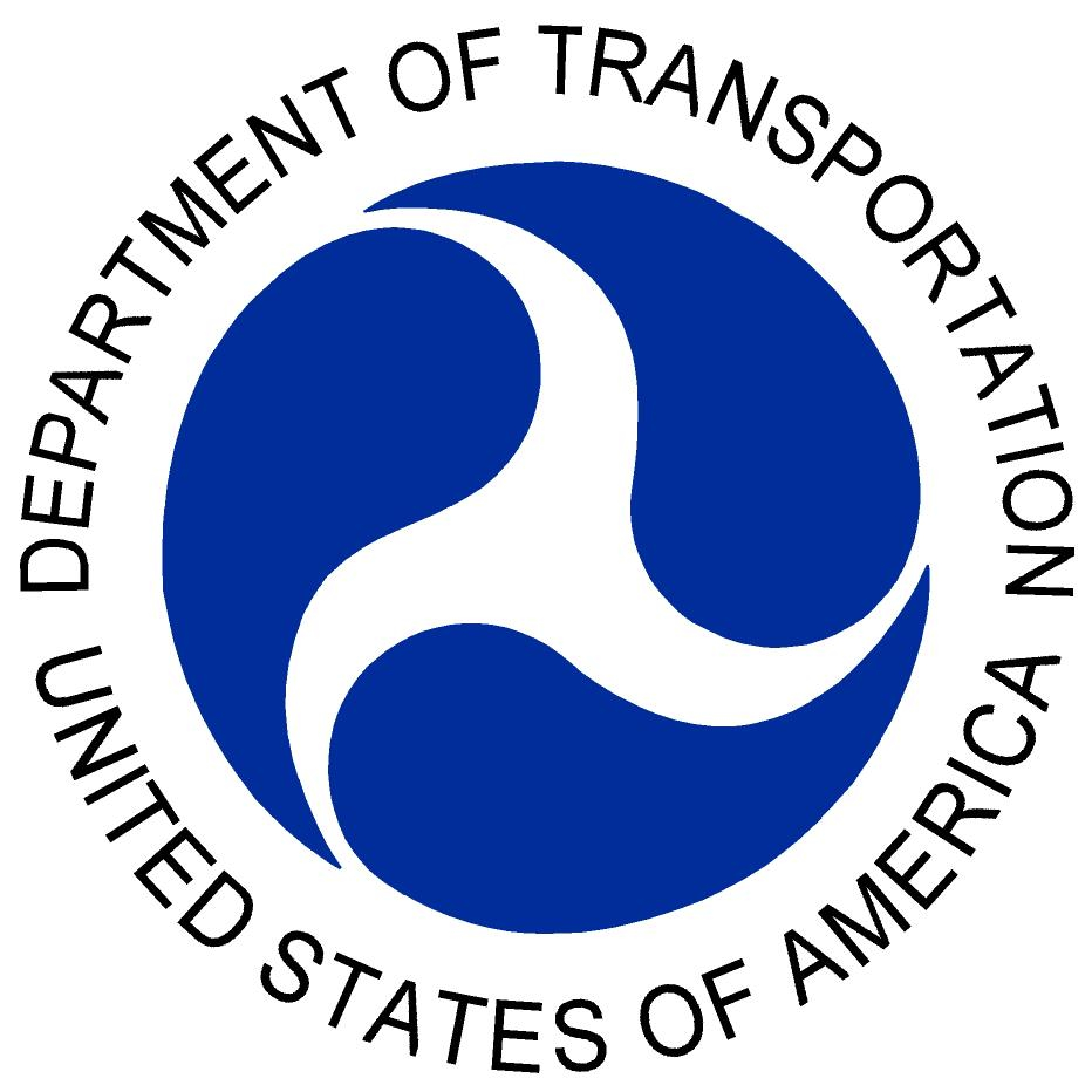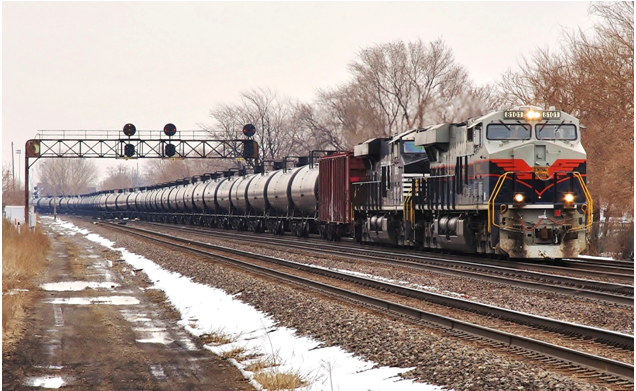 At approximately 1:15 AM EST on July 6th, 2013, a unit freight train of the cross-border operating Montreal, Maine, & Atlantic Railroad (MM&A) loaded with crude oil from the Bakken Shale Formations in North Dakota in the western United States suffered an as-yet unexplained failure of its automatic and manual braking systems while left unattended and presumably safely secured on the MM&A mainline track near the town of Nantes in provincial Quebec, Canada. The uncrewed train then proceeded to “run away” in an uncontrolled and accelerating descent of the 1.2% downhill grade on which it had been left tied down, and at an estimated speed of over 60 mph entered a 10 MPH speed restricted curve in the city center of the town of Lac-Mégantic some seven miles from the train’s starting point for the runaway. Tragically, much of the train derailed and multiple cars loaded with crude oil ruptured, caught fire, and exploded in the heart of the community. The resultant massive fires and sustained release of hazardous chemicals combined to kill or leave missing almost fifty Canadian citizens of the town, injure countless others, and destroy or contaminate much of the city center and nearby lake in a disaster which remains under investigation and for which recovery efforts continue.
At approximately 1:15 AM EST on July 6th, 2013, a unit freight train of the cross-border operating Montreal, Maine, & Atlantic Railroad (MM&A) loaded with crude oil from the Bakken Shale Formations in North Dakota in the western United States suffered an as-yet unexplained failure of its automatic and manual braking systems while left unattended and presumably safely secured on the MM&A mainline track near the town of Nantes in provincial Quebec, Canada. The uncrewed train then proceeded to “run away” in an uncontrolled and accelerating descent of the 1.2% downhill grade on which it had been left tied down, and at an estimated speed of over 60 mph entered a 10 MPH speed restricted curve in the city center of the town of Lac-Mégantic some seven miles from the train’s starting point for the runaway. Tragically, much of the train derailed and multiple cars loaded with crude oil ruptured, caught fire, and exploded in the heart of the community. The resultant massive fires and sustained release of hazardous chemicals combined to kill or leave missing almost fifty Canadian citizens of the town, injure countless others, and destroy or contaminate much of the city center and nearby lake in a disaster which remains under investigation and for which recovery efforts continue.
The MM&A has since gone bankrupt, and its operations assumed by different carriers. The rail line through Lac Megantic has been reopened. However, the consequences of this horrific event, and other ensuing derailments and resultant fires in Alabama and North Dakota involving similar loads of crude oil, but which quite fortunately avoided causing any human casualties, have rung like a bell through the Hazardous Materials/Dangerous Goods transport industry. Since Lac-Megantic, numerous emergency actions specified by Transport Canada (TDG), the US Department of Transportation (USDOT), the Pipeline and Hazardous Materials Safety Administration (PHMSA), and the Federal Railroad Administration (FRA) have been issued, requiring a wide variety of mitigating action in efforts to limit the potential for further incidents or to limit the effect of such incidents if they occur.
That bell rang again and loudly indeed on Monday, February 25th, 2014. Following up on previous actions it has taken dealing with the classification of crude oil, the USDOT has issued an Emergency Restriction/Prohibition Order under Federal Docket No. DOT-OST-2014-0025 which: “…mandates the proper testing (conducting with sufficient frequency and quality) and classification of petroleum products (i.e. petroleum crude oil) prior to them being offered into transportation,”
As well as:
“…requiring persons who offer bulk quantities of petroleum crude oil for transportation in commerce by rail to treat Class 3 Petroleum Crude Oil as a Packing Group (PG) I or Packing Group II hazardous material only until further notice.”
Item number two is especially problematical. Presumably, what DOT is saying here is that any load of UN 1267 Petroleum Crude Oil that has been classified as PG III must nevertheless be transported as if it were a PG I or II product. To say that this may cause some confusion to shippers and the railroads which serve them probably understates the case. According to the Hazardous Materials Table in the US 49 CFR 172.101, bulk packaging instruction 49 CFR 173.242 is assigned as the correct packaging instruction for UN 1267 Petroleum Crude Oil in Packing Groups II and III. Under subparagraph (a) of that instruction, it specifies the permitted rail cars for use as packages. All of the cars are DOT Spec; the sole exception allowed being an AAR (American Association of Railroads) Class 206W. Therefore, loads in PG II or III already are required to employ the same level of safety in bulk packaging in rail cars, and it is not immediately obvious what difference this order will make to that case—based on a reading of the order and of the related regulations, PG II and PG III loads have no difference in the way they are specified under law to be transported by rail. For loads assigned to PG I and therefore falling under the packaging instruction 49 CFR 173.243, the same DOT spec tank cars are allowed, the difference being that this instruction specifies the use of only cars having fusion welded tanks. The AAR 206W tank car is also excluded from use with PG I loads. To further confuse the issue, no guidance is given in the order as to how a material not in PG I or PG II is to be assigned for transport purposes to one of those groups, and which group, or under what circumstances. Given the differing packaging instructions already extant between PG I and PG II, some sort of guidance over how or even whether to assign which group for transport of a crude oil product not actually in either of those groups would, one thinks, have been of significant help to shippers. Neither is guidance given in reference to what changes may be expected in terms of marking requirements or shipping papers. Presumably, some sort of annotation regarding transport instructions would have to appear on the shipping papers, but the rule is silent in this regard.

A Norfolk Southern unit train of tank cars in crude oil service and being led by one of the railroad’s fleet of twenty famous “Heritage” locomotives passes through the busy rail freight corridor in Hammond, Indiana in March of 2013. A new DOT emergency order issued February 25th affecting crude oil transport in such unit trains has important implications for shippers of such commodities. The brown hopper car placed between the locomotives and the tank cars is a buffer, intended to help protect the train crew in the event of an accident. (photo copyright 2013 by Paul Burgess)
The DOT – 111 Spec tank car is at present the most numerous type of car in service to carry crude oil in the US and Canada, some 92,000 units being in service in 2013 (based on AAR estimates). It does not appear at first glance that this order would change that. What this order will do is introduce a complication in transport instructions, paperwork, and recordkeeping that is likely to cause significant angst in the shipper community.
The other part of the order, addressing the requirement for classification, introduces its own set of questions. Reading the order, DOT speaks of the issues surrounding the use of MSDS’s for classification purposes and makes remarks that appear to strongly discourage that practice. The order further notes that many storage tanks receive “hundreds of vehicle loads” of crude of varying characteristics, and that therefore the state of the crude transferred into a bulk package like a rail tank car may differ on an almost hour by hour (or less) basis. Some of the language used appears to require a test of each load, in addition to the testing performed at classification (if such classification has already occurred):
“…this order requires that any person who offers a large bulk quantity of petroleum crude oil into transportation in commerce conduct minimum testing of that petroleum crude oil to verify its classification and to retain records of that testing. Each offeror must conduct testing of a sample of a bulk quantity of petroleum crude oil being offered into transportation in commerce prior to offering that that bulk quantity of petroleum crude oil into transportation. At a minimum, the tests shall be capable of determining the petroleum crude oil’s flash point; boiling point; corrosivity to steel and aluminum; presence and content of compounds such as sulfur/hydrogen sulfide; percentage of flammable gases; and, the vapor pressure at 50 Degrees Centigrade. The offeror should clearly identify the method used to determine the vapor pressure.”
The order does not say what the tester(s) should or must do if their tests reveal a classification which differs from that previously assigned (if it was assigned), but the clear implication is that the material would obviously require re-classification. This opens a whole series of questions as to who will bear the primary liability for this activity. Many crude oils are recovered, stored at some initial site, and then transported to bulk terminals, where they are loaded into further storage. The stored materials then further transfer to bulk packages like rail cars, and may be offloaded, stored, and reloaded a number of times in transit to their final destination. According to the letter of this order, one can envision a scenario wherein the crude oil may have its classification changed any number of times in transit based on who has it in custody at any given moment, and where it is being stored or loaded to or from. The amount of additional testing and associated recordkeeping this order appears to require, and the potential for incurring related citations in reference to the improper conduct or use thereof, seems at first glance to be very high. To make matters cloudier still, this emergency action refers only to transport by rail. Transport by barge or tanker truck, both common as well in some geographic areas, is not addressed. It is hard to see how that squares with the idea that all transport modes are to be treated with equal attention to safety.
Another issue is risk, and the potential for increased financial strain that it may entail due to this order. This order requires that lower risk products (i.e. product legitimately classified as PG III) nevertheless be treated as being of higher risk (i.e. as PG I or II). It seems a likely outcome that insurers will take note of this change, and a reasonable supposition based on that is that rates to insure transport or storage of these materials will increase in answer to it, never mind the increased risk of incurring a damaging citation based on an incomplete or inaccurate classification test or any related recordkeeping activity. The impact of such risk liability to small terminal operators or smaller transport companies, or the cost of staffing up to meet the challenge (who is going to do all that testing, for instance?) may be such that some companies may decide that it is a prohibitive cost. In a standard rulemaking, an economic analysis is always conducted in an effort to determine the likely cost-benefit ratio of the proposed rule. In this case, it is an emergency order and no such analysis is extant. Apparently, the consequences of it will simply have to play out, and everyone will find out together how positive or negative they may turn out to be.
Here is a link to the Emergency Order:
Labelmaster is a full service provider of goods and services for the Hazardous Materials and Dangerous Goods professional, shippers, transport operators, and EH&S providers. See our full line of solutions at www.labelmaster.com.


